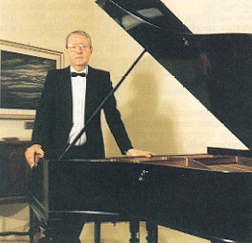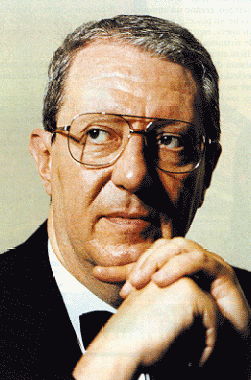Name Sergio Calligaris | Role Composer | |
 | ||
Mignone sergio calligaris 1972 prelude no 6 cai aras
Sergio Calligaris (born January 22, 1941) is a pianist, composer and piano teacher. After living and tutoring in the United States, where he gained his doctorate in music, Calligaris established his residence in Italy in 1974.
Contents
- Mignone sergio calligaris 1972 prelude no 6 cai aras
- Sergio calligaris quaderno pianistico di renzo
- The pianist
- The composer
- The teacher
- References

Sergio calligaris quaderno pianistico di renzo
The pianist
Calligaris was born in Rosario, Argentina. His career as a performer started at the age of thirteen. He pursued his studies under the guidance of such masters as Jorge Fanelli, Arthur Loesser, Adele Marcus, Nikita Magaloff, and Guido Agosti. Calligaris’ technique is characterised by the sheer brilliance and powerful touch typical of the Leschetizky school; his technical qualities, complemented by a detailed attention to the composition’s form, made him a fine interpreter of both romantic (especially Schumann and Chopin) and post-romantic (Rachmaninoff, Scriabin, Debussy) repertoire.
Calligaris has performed in prestigious concert-halls such as the Konzertsaal Bundesallee in Berlin, the Auditorium of S. Cecilia in Rome, the Musikverein Brahms-Saal in Vienna, and recently, as a soloist in his own Concerto for piano and orchestra op. 29, at the Main Theatre of Manila.
He has recorded, among the others, for EMI, Orion Records and the Ares-Libreria Editrice Vaticana; the latter, a few years ago, released a compilation entitled Sergio Calligaris: composer and interpreter to celebrate the twenty-fifth year of his recording debut.
The composer
Calligaris turned back to composition around the end of the 1970s, after some twenty years spent performing. One of his earliest works, Renzo’s piano notebook, Op. 7 (written in 1978), has since become a widely executed contemporary piano piece. In this oeuvre featuring ten short and well-characterised pictures, all qualities of Calligaris’ music can already be singled out:
Calligaris’ composing career soared after the welcoming reception of Renzo’s piano notebook, with commissions from various musical institutions (the Symphonic dances, Op. 26, for example, by the Teatro Bellini in Catania). A prolific composer (his last works are Imagenes for string orchestra op. 54 and Allegro brutale con pavana op. 55 for four-hand piano or two pianos ad libitum), Calligaris has been able to produce steadily without making any concession on the quality, rigour, beauty and originality of his music. This ‘no-compromise’ approach is thought to be an important element of his music's success.
Beside the production for piano (which ultimately led to a fruitful cooperation with pianist and director Vladimir Ashkenazy), Calligaris wrote for a variety of instruments (voice, cello, trumpet, organ, clarinet, flute, violin, horn) and for both chamber and symphonic orchestras. The majority of his compositions have been recorded by several artists. In 2007, Sergio Calligaris has been awarded the International Prize "Giuseppe Verdi" in recognition of his activity as both performer and composer.
Calligaris' composition are published by Carisch. Between 2008 and 2009 Carisch has issued four anthological volumes entitled Piano Parnassum, which collect most of his works for piano (the fourth volume includes compositions for four hands).
The teacher
Sergio Calligaris taught both in the United States (Cleveland Institute of Music, California State University at Los Angeles) and in Italy (Conservatorio di Napoli, Pescara and L’Aquila). He has been member of juries in several prestigious piano competitions.
